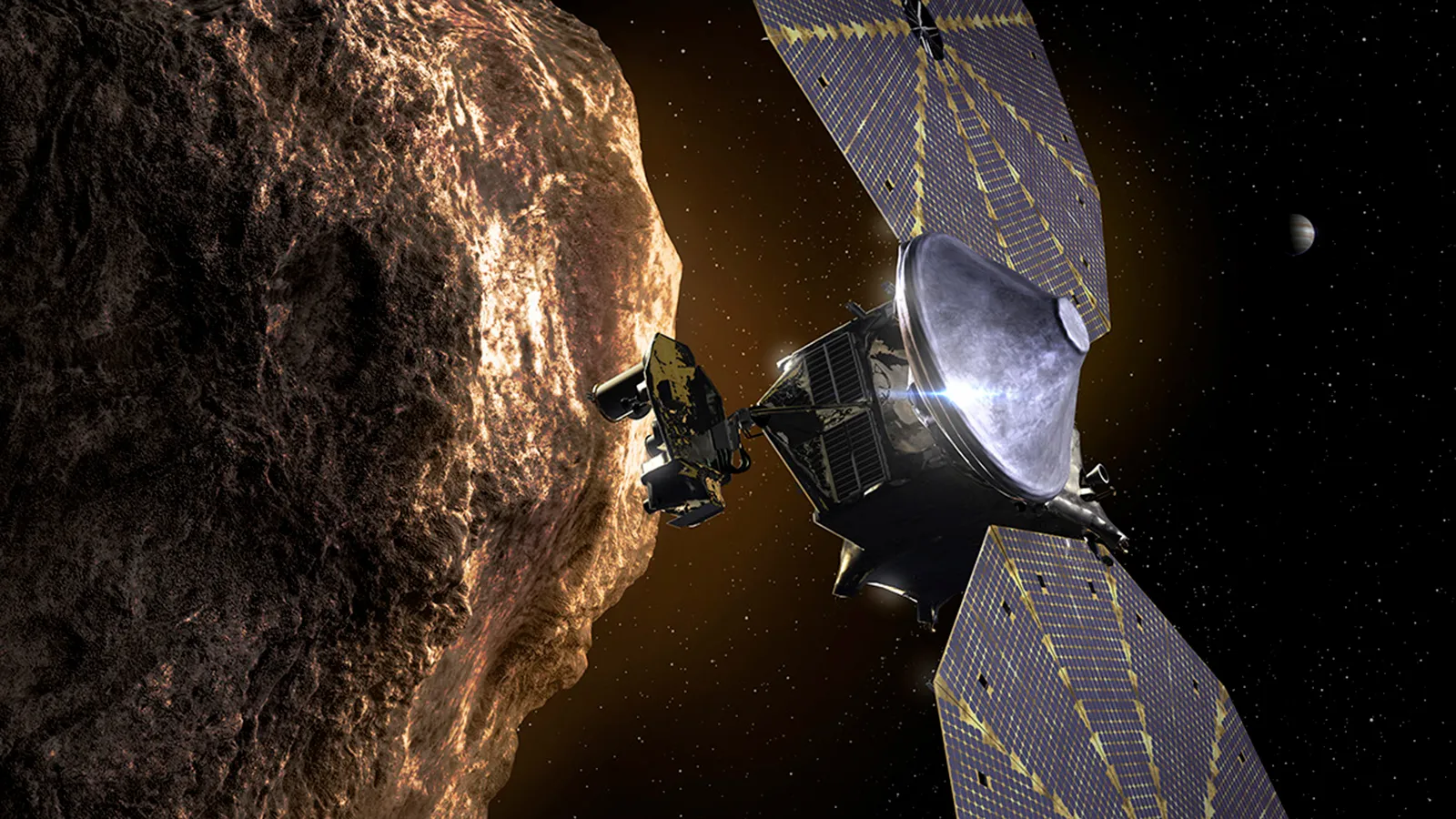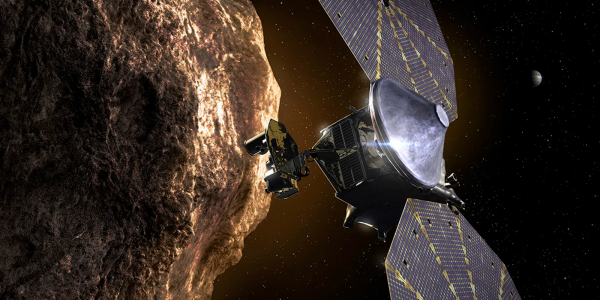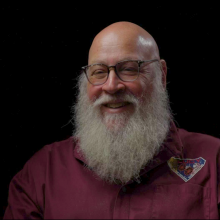Planetary scientist Dr. Hal Levison will deliver the 2024 Robert M. Walker Distinguished Lectures about NASA's Lucy Mission.
2024 Robert M. Walker Distinguished Lecture Series
Dr. Hal Levison is an Institute Scientist at the Southwest Research Institute and the Principal Investigator of the Lucy mission, a groundbreaking exploration of the Jupiter Trojan asteroids. His research focuses on the dynamics of astronomical objects, particularly the formation and evolution of our solar system. In his work, Levison uses advanced computer models to simulate and decode complex gravitational interactions and planetary formation scenarios, significantly advancing our understanding of how solar systems evolve.
Levison will present the 2024 Robert M. Walker Distinguished Lectures, starting with a scientific colloquium on October 16 titled “Lucy: The First to the Trojans.” On October 17, he will deliver the public lecture “Traveling with Lucy on the First Ever Mission to the Trojan Asteroids!” During these lectures, Levison will discuss the mission's objectives, preliminary findings, and broader implications for planetary science.
Levison is renowned for his significant contributions in several areas, including studying how planets and smaller bodies form and evolve, examining the populations and long-term dynamical behavior of comets and objects in the Kuiper belt, exploring the origin and stability of Trojan asteroids, and understanding the processes involved in the formation of moons and other satellites.
The Lucy mission, named after the famous Lucy fossil that revolutionized our understanding of human evolution, aims to reveal the "fossils of planet formation." Appropriately, the fossil collection itself was named after the Beatles' 1967 hit "Lucy in the Sky with Diamonds." This NASA space probe has embarked on a twelve-year journey to explore a record number of asteroids, providing unprecedented insights into our solar system’s origins and evolution.
During the mission, Lucy will fly by three main belt asteroids between Mars and Jupiter, and proceed to explore eight Trojan asteroids sharing Jupiter's orbit around the Sun. These asteroids orbit in two swarms: one ahead of Jupiter and one trailing behind. Lucy will navigate through both swarms, providing unprecedented insights into these celestial bodies.Exploring Jupiter Trojans is a high-priority goal of the Planetary Science Decadal Survey. These asteroids are considered remnants of the primordial material that formed the outer planets (Jupiter, Saturn, Uranus, and Neptune), and thus serve as time capsules from the birth of our solar system over four and a half billion years ago. Their varied surface compositions suggest they formed in different locations within the solar system and later migrated to their current orbits.
To unravel the mysteries held by these primitive bodies, Lucy targets several key science objectives at each destination. The mission will study the surface geology, color, and composition of the asteroids, determine their masses and densities, and search for rings and satellites. Whatever Lucy finds at the Trojan asteroids will provide critical clues about the formation of our solar system.
During its twelve-year mission, Lucy will travel almost 4 billion miles, completing three-and-a-half enormous loops around the Sun. It will journey slightly beyond Jupiter, making Lucy the first spacecraft to return to the vicinity of Earth from the outer solar system. The spacecraft's average cruising speed is about 39,000 miles per hour, slowing to approximately 15,000 miles per hour as it passes each Trojan asteroid while collecting data. Lucy will also make three flybys of Earth to get a push from its gravity, propelling it towards its final encounters with the distant asteroids.
Serving as the first scout to the Trojan asteroids, Lucy will gather extensive visual, compositional, and physical data using robotic cameras, spectrographs, and Doppler tracking. This information will be crucial for planning future missions. Lucy will break records by operating farther from the Sun than any previous solar-powered spacecraft and will foster the development of more efficient solar cells.

Launched on October 16, 2021, Lucy completed its first Earth flyby and gravity assist in October 2022. On November 1, 2023, the spacecraft flew by not just its first asteroid, but its first three. Early images revealed that the small main-belt asteroid Dinkinesh—another name for the Lucy fossil discovered by Donald Johanson—has a satellite of two smaller objects touching each other. The Lucy team used this encounter as an opportunity to test spacecraft systems and procedures.
As Lucy skims the inner edge of the main asteroid belt, it is now heading back toward Earth for a gravity assist in December 2024. This flyby will propel the spacecraft back through the main asteroid belt. Levison noted, "On the way out, it passes a main belt asteroid, which we’ve named after Donald Johanson, the discoverer of the Lucy fossil." It will then travel onward to the Trojan asteroids in 2027. After its third and final gravity assist in December 2030, Lucy should reach the second swarm of Trojan asteroids in March 2033.
Upon completing its mission, Lucy will continue on a stable orbit, ranging from near Earth’s orbit out to the Trojan swarms. The trajectory is carefully designed to ensure that Lucy should not hit Earth or contaminate any potentially life-supporting locations. If not collected by future explorers as a historical artifact of the early days of solar system exploration, Jupiter's gravity will eventually direct Lucy into the Sun or eject it from the solar system. Just as the Lucy fossil revolutionized our understanding of human evolution, this Lucy mission aims to enhance our understanding of our solar system’s origin and evolution.






